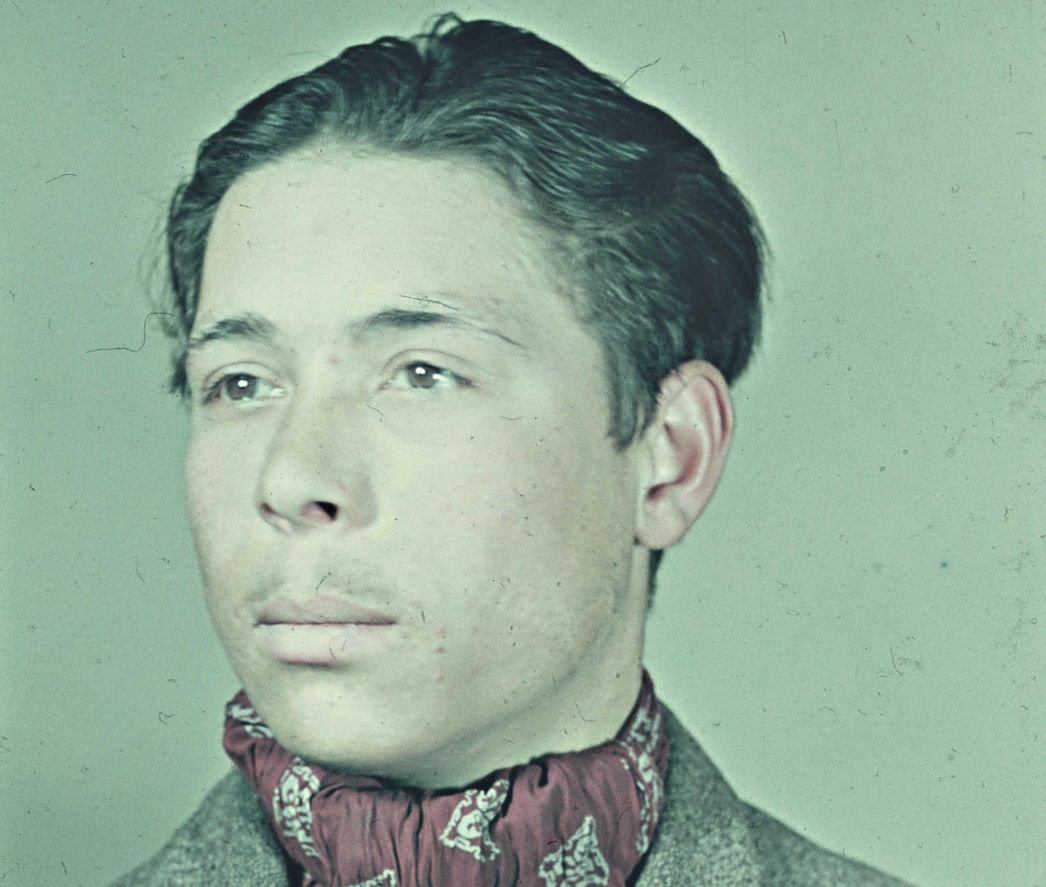Transcript
Narrator 1 Already the facial expression reveals that this colour portrait was not taken in a family setting. It belonged to the material of the so-called “Eugenic Research Department” and was filed with the sitter’s handprints and a measurement sheet. Self-appointed “gypsy researchers” took the photo in February 1940. For their work, they had the Magdeburg police bring them Sinti from the Holzweg forced labour camp. Registration and measurement – under the pretence of scientific research, these racists were accomplices of the police and the SS in persecution activities that had already been going on for years.
Narrator 2 At first sight, the camp in Holzweg in Magdeburg hardly differed from many other camps established in the vicinity of large German cities in the second half of the 1930s. The vernacular belittled it as a “gypsy camp”. Sinti were placed under police surveillance there, had to live in caravans or wooden shacks and were completely banned from city life. It was as if they only existed in the card files of the police and the race researchers. In the fantasies of the authorities about what was to happen to them, terms such as “take them away” and “make them disappear” prevailed. In 1938, the criminal investigation department registered all adult Sinti in the Magdeburg camp in the manner of criminals. Soon thereafter, in June, the officials randomly singled out a number of them and transferred them to Buchenwald.
Narrator 1 Kurt Ansin was among those arrested. He was sixteen at the time, had seven brothers and sisters, and worked as a farmhand. He was taken to Buchenwald with his father. Here he was one of the youngest inmates. He and his father were among the first to have the word “gypsy” entered on their file cards. The SS assigned them to the inmates’ group labelled “work-shy, Reich”. Thousands were arrested within the framework of a police operation of the same name. The police referred to it as “cleansing”, but actually it was carried out in response to the SS demand for manpower to build the concentration camp. For Kurt Ansin and the others, this meant heavy labour at excavation and construction sites. His father looked after him. In April 1939, Kurt Ansin was released to the Holzweg camp. His father remained in Buchenwald and died here.
Narrator 2 For the Sinti families in the Holzweg camp, arrests and searches were everyday occurrences. Kurt Ansin was taken into custody once again, now for alleged assault. In March 1943, criminal investigation officers fetched him and his entire family and deported them to Auschwitz-Birkenau. There the SS had partitioned off a large area of the camp where they herded Roma and Sinti from all over Europe together. The majority of them were killed in the gas chambers.
Narrator 1 The SS sent Kurt Ansin on a transport to Buchenwald to perform forced labour. He survived the heavy labour in the Ellrich subcamp. When he returned home after liberation, he found only his mother. All other members of the family were dead. Camp custody left him with severe physical and emotional injuries. His most important goal was to father a big family. He married in Berlin and went on to have eight children and twenty-one grandchildren. They called him by his childhood nickname: Sailor. He died at the age of sixty-one.


